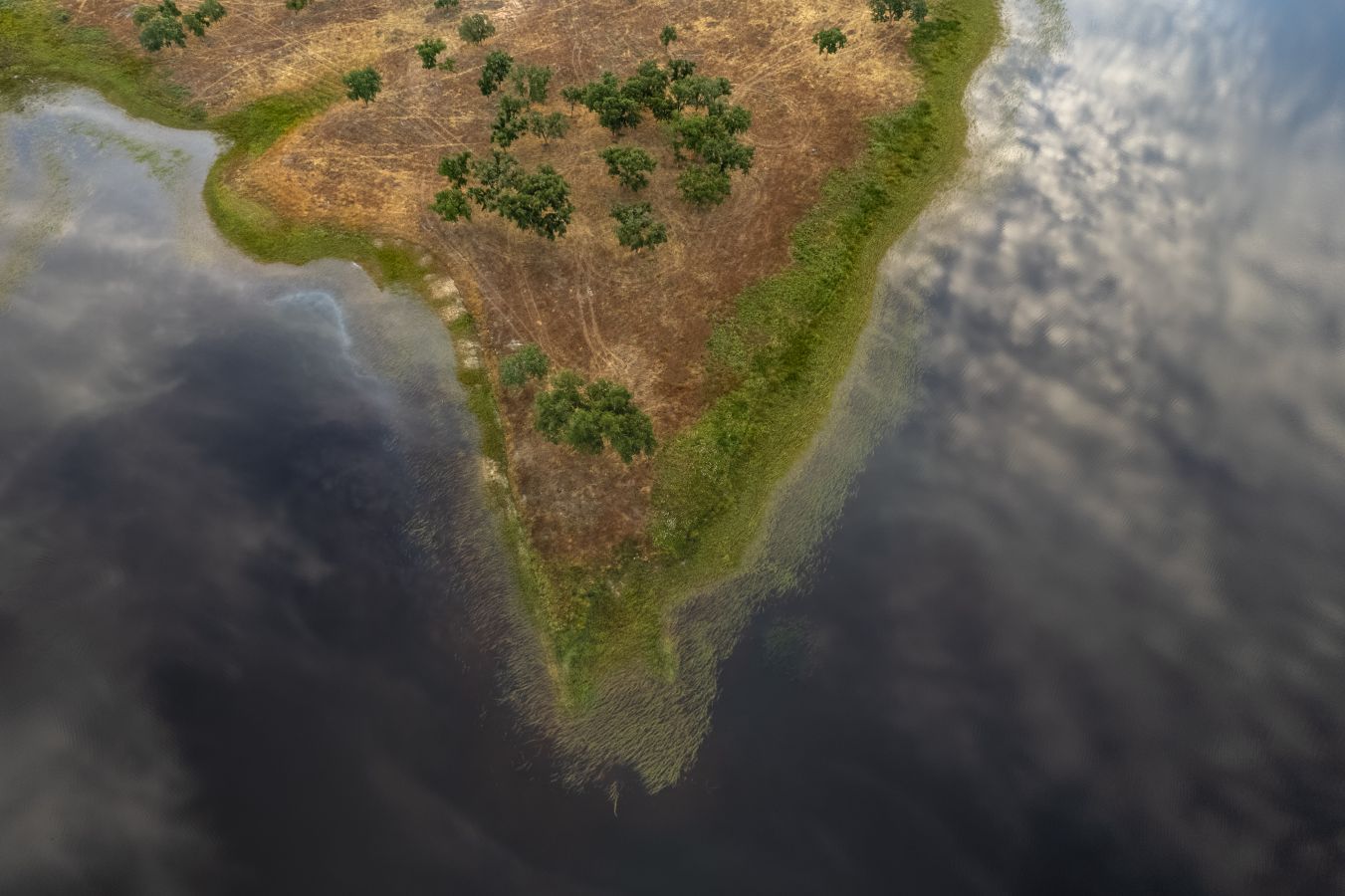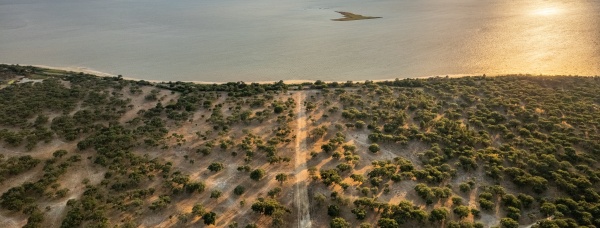700 000
hectares of cork oak montado in Portugal
hectares of cork oak montado in Portugal
14 M
tons of CO2 retained per year by the montado
tons of CO2 retained per year by the montado
37 Species
of mammals. One of the world's richest ecosystems
of mammals. One of the world's richest ecosystems
200 years
is the average lifespan of a cork oak
is the average lifespan of a cork oak

What is it?
A montado is an area that is more sparsely populated with trees (the typical landscape of the Alentejo), resembling savannah, and where the cork oak is the predominant species. However, cork oaks can be found in a community with other species – another type of oak, pine and pine nut – giving rise to cork oak forests, closed, denser woods where other species also grow: cistus, sargasso, and genista, among others.
The montados form cultural landscapes, i.e. systems that result from human action by utilizing diverse resources: the cork, the fruits for the animal feed, pastures, or the agricultural crops that coexist in the same area and give the montados their forestry-pastoral character.
A montado is an area that is more sparsely populated with trees (the typical landscape of the Alentejo), resembling savannah, and where the cork oak is the predominant species. However, cork oaks can be found in a community with other species – another type of oak, pine and pine nut – giving rise to cork oak forests, closed, denser woods where other species also grow: cistus, sargasso, and genista, among others.
The montados form cultural landscapes, i.e. systems that result from human action by utilizing diverse resources: the cork, the fruits for the animal feed, pastures, or the agricultural crops that coexist in the same area and give the montados their forestry-pastoral character.

How did they come about?
The montados may have been formed in prehistoric times, due in part to the use of fire by Man, as occurs today, in the savannahs. There is evidence of the existence of the montados throughout history, making them part of the cultural heritage of the Western Mediterranean. In regions such as the southwest of the Iberian Peninsula or the Sardinia, they are part of the regional identity.
The reconstitution of many of the present-day stands of cork oak, particularly the montados, occurred around the middle of the 19th century, due to the increase in the commercial value of cork and the demand for livestock products in the growing cities
The montados may have been formed in prehistoric times, due in part to the use of fire by Man, as occurs today, in the savannahs. There is evidence of the existence of the montados throughout history, making them part of the cultural heritage of the Western Mediterranean. In regions such as the southwest of the Iberian Peninsula or the Sardinia, they are part of the regional identity.
The reconstitution of many of the present-day stands of cork oak, particularly the montados, occurred around the middle of the 19th century, due to the increase in the commercial value of cork and the demand for livestock products in the growing cities

Where is it?
The cork oak is a typical species of the western Mediterranean region, where it grows spontaneously in Portugal and Spain, but also in Morocco, Algeria and Tunisia. It also grows in the South of France and on the west coast of Italy, as well as the islands Sicily, Corsica and Sardinia. The total area currently occupied by cork oak forests is around 1.44 million hectares in Europe and 0.70 million hectares in North Africa. More than half of the area is located in the Iberian Peninsula.
The cork oak is a typical species of the western Mediterranean region, where it grows spontaneously in Portugal and Spain, but also in Morocco, Algeria and Tunisia. It also grows in the South of France and on the west coast of Italy, as well as the islands Sicily, Corsica and Sardinia. The total area currently occupied by cork oak forests is around 1.44 million hectares in Europe and 0.70 million hectares in North Africa. More than half of the area is located in the Iberian Peninsula.
Area of montado worldwide
| Country | Area (thousand hectares – ha) * | Percentage |
| Portugal | 720 | 34 |
| Spain | 574 | 27 |
| Marroco | 383 | 18 |
| Algeria | 230 | 11 |
| Tunisia | 86 | 4 |
| France | 65 | 3 |
| Italy | 65 | 3 |
| Total | 2.123 | 100 |
* Source: Portugal: IFN, 2019; Spain: MARM, 2012; Italy: FAO, 2005; France: IM Liege, 2014; Morocco: HCEF Marroc, 2011; Algeria: EFI, 2009; Tunisia: Ben Jamaa, 2011.

Montados and cork oak forests
A montado is an area that is more sparsely populated with trees (the typical landscape of the Alentejo), resembling savannah, and where the cork oak is the predominant species. However, cork oaks can be found in a community with other species – another type of oak, pine and pine nut – giving rise to cork oak forests, closed, denser woods where other species also grow: cistus, sargasso, and genista, among others.
The montados form cultural landscapes, i.e. systems that result from human action by utilizing diverse resources: the cork, the fruits for the animal feed, pastures, or the agricultural crops that coexist in the same area and give the montados their forestry-pastoral character.
A montado is an area that is more sparsely populated with trees (the typical landscape of the Alentejo), resembling savannah, and where the cork oak is the predominant species. However, cork oaks can be found in a community with other species – another type of oak, pine and pine nut – giving rise to cork oak forests, closed, denser woods where other species also grow: cistus, sargasso, and genista, among others.
The montados form cultural landscapes, i.e. systems that result from human action by utilizing diverse resources: the cork, the fruits for the animal feed, pastures, or the agricultural crops that coexist in the same area and give the montados their forestry-pastoral character.

Forest certification
Forest management certification is a mechanism that aims to ensure the sustainable management of forest ecosystems through compliance with management standards that meet environmental and socioeconomic criteria.
The two main forest certification systems are the Program for Endorsment of Forest Certification (PEFC) and the Forest Stewardship Council (FSC), which in Portugal cover 253 thousand and 350 thousand hectares of forest area respectively.
Forest management certification is a mechanism that aims to ensure the sustainable management of forest ecosystems through compliance with management standards that meet environmental and socioeconomic criteria.
The two main forest certification systems are the Program for Endorsment of Forest Certification (PEFC) and the Forest Stewardship Council (FSC), which in Portugal cover 253 thousand and 350 thousand hectares of forest area respectively.
